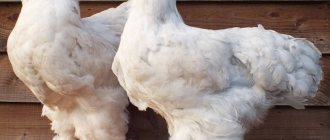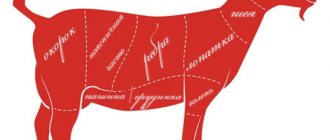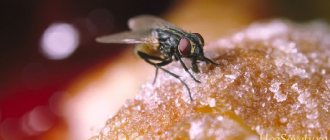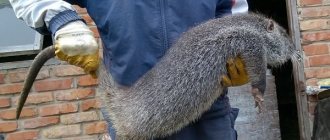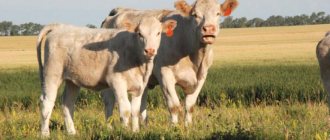Castration of sheep
Why do you need to castrate sheep?
Castration is a surgical intervention to stop the functions of the reproductive glands of an animal, in this case a ram. Most often, such an operation is resorted to to improve the fattening process of young animals, reduce the aggressiveness of males and their general activity. In addition, the resulting meat product loses its unpleasant odor, which in some cases is considered a very strong argument in favor of castration.
No matter how a person interferes with the natural reproductive processes in an animal’s body (blood or bloodless), as a result he gets a ram that is unsuitable for further breeding work.
Features of the anatomical structure of the gonads
The shape of the testes is oval, in young ones it is more elongated, and with maturity it becomes rounder.
The sizes have a strong age dependence - during the period of mass castration (2-5 months) they usually do not exceed a chicken egg. The body of the testis consists of parenchymal tissue, separated by stroma, and connective tissue. A distinctive feature of rams is the weak development of stroma and the prevalence of parenchyma, which makes the testes less dense and durable. The seminal appendage is represented by a network of convoluted vas deferens, forming a dense formation. It has separate nutrition due to the vessels of the vas deferens, which is separated from the umbilical branch.
The scrotum is a large skin sac that contains the gonads of the sheep. A specific feature is the low descent of the testes and the formation of a scrotal neck. Layers and shells:
- leather. Relatively thin in young rams, covered with small hair, containing fat and sweat glands, divided by a median suture;
- The muscular layer is a durable membrane connected to the skin and forming separate cavities for each testis. In old rams it contains developed fatty tissue;
- common tunica vaginalis - a layer formed by protrusion of the inner part of the abdominal wall when the testis descends;
- special vaginal membrane - covers the gonads along with the appendage.
Laying out males using a scalpel
Very often, veterinarians act the old fashioned way - they perform an operation on a ram that has reached six months, only by treating the skin with alcohol before cutting it. Few people think about doing anything to relieve the pain of the procedure.
But nevertheless, some people still believe that since animals are under the power of man and serve him, even as food, then he is simply obliged to reduce their suffering as much as possible. Therefore, shortened castration was invented not so long ago.
This procedure differs from the traditional method of surgery in that during it only the male’s scrotum is removed. The ram's testicles themselves remain intact, but are pushed up. Due to this, the male, although he produces testosterone, is not able to fertilize the sheep.
And finally, everyone knows about castration itself, during which the ram’s scrotum is cut, the testicles are released and removed. As a result of the operation, an open wound is left, which can become infected from the outside with dust, dirt, flies and other insects.
A person who decides to engage in cattle breeding should know more about his business. And that’s why it’s so important to keep abreast of all the innovations that scientists and veterinarians offer sheep farmers.
Indications
Rams, like all farm animals, are castrated. There may be several reasons for this:
- The testes are necessarily removed from those lambs that cannot be used for breeding work. Intervention makes it possible to prevent the appearance of offspring from low-breed males and correct their behavior. After castration, sheep become calmer. Valukh (emasculated ram) does not show aggression, desire to clarify hierarchical relationships and establish leadership in the flock, which can significantly reduce injuries.
- In sheep, puberty occurs much earlier than the body is ready to bear healthy offspring. Keeping males and females together can lead to non-viable lambs and significant losses. Castration makes it possible to avoid such problems and simplifies the maintenance of large livestock on range and in pens.
- Castration of lambs in agriculture is also used to change the taste characteristics of meat: it does not have a pronounced unpleasant odor, is distinguished by the presence of more fat and less fiber.
- The absence of gonads has a positive effect on the quality and volume of wool obtained from rams. During slaughter, the skin of such animals is removed much easier and without damage.
- Much less often, castration of sheep is carried out for medical reasons: in case of injury to the genital organs or the detection of certain pathologies.
Castration of rams performed at the optimal time eliminates many of the problems of keeping sheep and significantly increases the profitability of the farm.
Contraindications
When selecting lambs for castration, both indications and contraindications should be taken into account. Intervention at too early an age is not recommended due to possible delays in the growth and development of the animal. Castration of lambs is not carried out 10 days before scheduled vaccination and for 2 weeks after it.
1-2 days before the planned intervention, all sheep are carefully examined: the temperature is measured, the position of the testes and their condition are determined. Do not operate on weakened, emaciated or sick individuals. Intervention is not recommended if the lambs go to slaughter after reaching 5-6 months.
Surgery in adulthood is associated with a high likelihood of postoperative complications and the need for subsequent long-term treatment.
Possible complications
Most often, negative consequences occur after open surgery. In this case, rams experience prolapse of the intestinal loop. Prolapse of the spermatic cord is also possible. If such complications are eliminated in time, they will not affect the outcome of the operation.
More dangerous consequences include bleeding. In such a situation, repeated stitching may be necessary. Late complications include the accumulation of clotted blood and infection in the body. If the animal is not helped in time, there is a risk of gangrene, sepsis and death of the pet. Sheep castration can be carried out in various ways. For the procedure to be successful, it is important to choose the right method of surgical intervention and strictly adhere to all rules and instructions.
Age
Puberty in lambs occurs on average at 6 months. In some early maturing breeds, signs of puberty may be observed even earlier. The optimal period for removing the testes occurs 3-4 weeks before the completion of the development of the genitourinary system. The minimum acceptable age for castration of lambs is 3-4 months. Intervention carried out earlier than the specified period can cause significant disturbances in metabolic processes and cause growth retardation in comparison with sheep not subjected to intervention. If rams are castrated after maturity, behavioral sexual responses may persist for some time.
Adult males that have become unsuitable for breeding work are operated on several months before slaughter, during which the male is fattened and the meat loses its specific smell.
To prevent possible complications, mass castration on farms is recommended to be carried out in the autumn or spring months. Low air temperature and the absence of insects carrying pathogens reduces the likelihood of bleeding, inflammatory processes and other pathological conditions.
Age at which castration must be performed
The optimal age of a ram for castration depends on the chosen method of performing the procedure. Thus, surgical procedures are best performed when the animal reaches 2 or 4 weeks, since at a later date the testes become much larger and more difficult to work with. In addition, the active development of the connective membrane, which complicates the process of clamping the spermatic arteries, becomes a problem.
Without incision of the vaginal layer, animals are usually castrated between 2 and 6 months of age, and partial castration (the rarest type) is used for young animals of 2 or 3 months of age
The structure of the ram's reproductive system
Without knowledge of sheep anatomy, you should not consider the possibility of self-castration of rams, since there is a high probability of serious damage to the animal’s organs and their further rapid death.
Males are characterized by oval testes, which in lambs have a more elongated shape, and with age they acquire the outline of an almost perfect circle. From 2 to 5 months of life, their size is no more than the size of a chicken egg, and the body of the testis is formed by connective and parenchymal tissue layers. A special characteristic of rams is the weak expression of the stroma, with a clearly visible parenchymal part, which makes the testes less dense.
The seminal appendages are a network of convoluted vas deferens that form a dense region. Its nutrition is largely due to the seminal vessels separated from the umbilical zone. The scrotum is presented in the form of a large skin sac with the gonads of the animal inside. The specific feature of these organs is the low location of the testes and the formation of the cervical zone of the scrotum.
The genital organs of the ram: 1. Bulbous glands, 1-3 cm in size, oval in shape; 2. Retractor muscle (retractor); 3. S-shaped bend of the urogenital canal; 4. Scrotum; 5. Testis with appendage: the testis is ellipsoidal, dimensions in adult males are 10-11 cm long, 6 cm thick, weight 250-300 g. The testicular appendage is adjacent to the posterior edge of the testis. The head is located on the upper part of the testis, the body is located on the back part, and the tail is located on the lower part of the testis; 6. Prepuce 7. Penis with a process of the urogenital canal, which reaches a length of 3-4 cm and plays a role in spraying sperm. The total length of the penis during erection reaches 0.5 m; 8. Spermatic cord; 9. Sperm duct; 10. Kidney; 11. Ureter; 12. Rectum; 13. Bladder
The skin of the genital organs and its layers in young rams is relatively thin and densely covered with short hairs. Fatty and sweat glands pass through the thickness of the skin, separated by a middle suture. The muscle layer is represented by a durable membrane connected to the skin and forming separate areas for each testis. In old rams, this part contains a well-developed subcutaneous layer of fat.
The common tunica vaginalis is the layer that was formed by the protrusion of the inner part of the abdominal wall when the testis descended. In contrast, a special vaginal membrane passes along the surface of the gonads along with the appendage.
Methods of castration
In different cases, different methods of performing the procedure are suitable for castrating rams, of which many farmers prefer bloodless options. Firstly, they are much simpler from a technical point of view, and secondly, the duration of animal rehabilitation will be shorter, and it will not require much effort from the farmer.
No blood
The main types of bloodless castration are elastration (involves the presence of rubber rings), the process of destruction of the spermatic cords or testicular parenchyma. Each case has its own characteristics and rules for performing the task, which should definitely be studied before starting practical actions.
Elastration
Elastration is deservedly considered one of the simplest and most well-known ways to limit the reproductive function of rams. It involves placing special rubber rings on the neck of the scrotum using forceps. Both an experienced farmer and a novice sheep breeder can easily cope with this task, but it is best to castrate young lambs up to 4 weeks of age (later the testes increase in size and using rings becomes problematic).
The sequence of actions during elastration will be as follows:
- First you need to fix the lamb in the most comfortable position for you.
- Then put the rubber band of the ring on the jaws of the forceps and stretch it to a diameter sufficient to thread the testes through it.
- Pass the scrotum through the elastrator ring and remove it at the neck of the scrotum, leaving it in this position for about 2 weeks.
This time will be enough for complete atrophy and death of the gonads of the lamb.
Destruction of the spermatic cord
This type of castration is a more complex task, involving the use of several different types of forceps (depending on the age of the animal being castrated). In the first days after such an intervention, there may be slight swelling of the ram's scrotum, but the general behavior and condition of the animal does not change. The castration process in this case consists of the following sequential actions:
- Fixing the lamb in a comfortable position (usually lying on its back).
- Palpation of the testis with identification of the spermatic cord (it is more convenient to do it with the left hand).
- Retracting the epididymis to the side wall and applying forceps closer to the testis.
- Sharp compression of the pliers levers until a characteristic crunch appears. If you don’t hear it, then you should reapply the sponges by 1–1.5 cm and keep the forceps clamped for another 5–7 seconds.
- Repeat the procedure for the second testicle.
If all steps were performed correctly, then complete atrophy of the lamb’s genital organs will occur within 5–7 months, and it will be unable to fertilize sheep
Destruction of the testicular parenchyma
This method takes into account as much as possible the biological characteristics of the ram’s reproductive system and its body as a whole, but despite this, it is used extremely rarely in practice. The main tool for carrying out manipulations in this case are jaw-shaped forceps, shaped like a spoon: the body of the testis rests on one part of the instrument, and the second part is used to capture and destroy the parenchyma. The most suitable size of sponges is selected taking into account the age of the ram and the size of its gonads.
From a technical point of view, all actions must be performed in the following order:
- The animal is fixed in a lateral position on a previously prepared area.
- His testis is placed in the concave part of the forceps and pressed with another sponge.
- The lower handle rests on the ground, and then with a sharp movement on the other lever the sex gland is destroyed (a characteristic crunch should appear).
- Similar actions are performed with the other testis, after which it is worth assessing the extent of the damage: the membranes should be torn, and the loose tissue should fill the testis.
Usually, no side effects are observed from such a procedure and the integrity of the skin is not compromised. Rams recover quickly and do not require any special care during the rehabilitation period. At the same time, cases of testicular regeneration were recorded, which was the reason for distrust in the method and its rare use.
Bloody
Bloody methods of castration of rams require more knowledge from the farmer than the previous group. This is explained by the need to break the skin and the possible entry of infection into the body, therefore, in order to prevent undesirable consequences, it is worth using antiseptic medications and using only sterile instruments.
There are closed and open methods of castration.
Closed method
This option can be used to castrate rams of any age, but usually these are animals aged 2-6 months. Tools that will be useful are a scalpel, scissors, iodine tincture, forceps (Telyatnikova and Zanda), as well as disinfectant powder (like streptocide or penicillin).
Instructions for performing castration using the closed method:
- Secure the animal in a comfortable position.
- Make injections of 0.5% novocaine, 5–10 ml into each testis.
- Remove hair from the skin of the scrotum.
- Treat the surgical field with prepared iodine.
- Pull the skin of the scrotum down, while simultaneously moving the testis upward.
- Cut off the top of the scrotum with sharp scissors.
- Remove the skin to the inguinal rings, removing the testes in the vaginal membrane.
- Clamp the spermatic cord and vessels with the jaws of forceps.
- Cut off the testes with a scalpel 1 cm below the clamp.
- Apply antiseptic to the surgical wound.
Over the next few days after the procedure, lambs and grown bulls should be kept separately and only in a clean barn, constantly monitoring the condition of the wound.
Features of castration of old individuals
Old animals need to be castrated to reduce their sex drive and eliminate the unpleasant smell of meat. Sexually mature males have an overdeveloped scrotum. This affects castration.
To complete the procedure you need to do the following:
- Remove hair from the scrotum and inject novocaine.
- Secure the male by pulling the pelvic limb towards the head.
- Cut the skin of the scrotum using a circular method. This should be done until the testicular membrane is reached.
- Pull up the spermatic cord and secure with forceps.
- Cut off the testes. This is done with the scrotum and a fragment of the cord.
- Fix the forceps for 2-3 minutes, then sprinkle the wound with an antiseptic.


